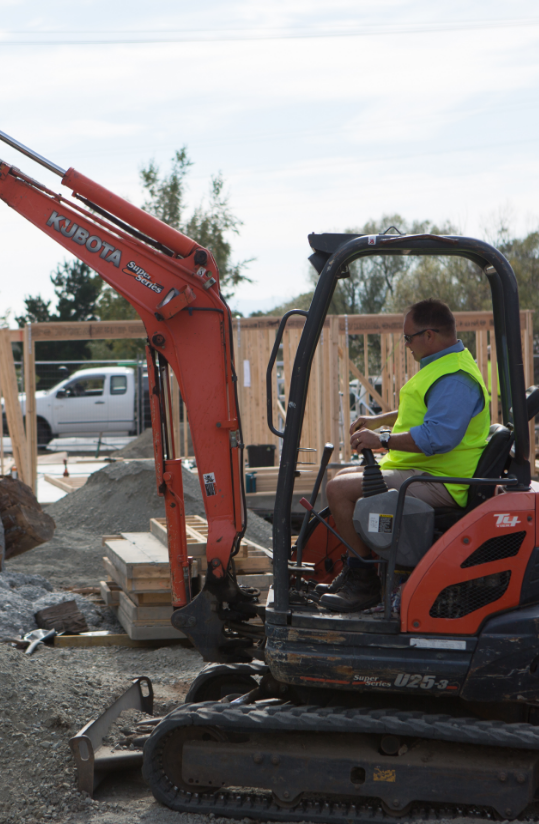- No products in the cart.
Jobs and Skills
The Australian workforce is facing critical shortages across industries and skill levels, hindering economic recovery and productivity growth. Attracting enough people to meet the demands of the coming decades is a major challenge, but policies around training, skilled migration, and industrial relations offer opportunities to build a more productive labour force.




What are the challenges?
The construction industry faces the challenge of achieving necessary training outcomes for new entrants and retaining them. Overseas migration is impeded by visa processing times, restrictive occupational migration lists, and low annual work visa caps. Increasing the attractiveness of the industry to women presents a massive opportunity to increase the pool of potential workers. Despite these challenges, progress is being made in narrowing the gender pay gap and increasing female representation in construction occupations.
How do we fix them?
- Fund a National Partnership Agreement to improve careers education in high schools. This will provide students with access to unbiased and current information to help them make informed decisions about their future careers.
- Developing an Apprentice Commencement and Retention Strategy to embed evidence-based learnings that will improve the consistency and outcomes of the Australian Apprenticeship System. The Strategy should assess the impact of government policy and program decisions on commencements and retention and draw on the findings of pilots and programs undertaken in recent decades.
- Tasking the National Careers Institute to lead a coordinated national campaign to dispel the myths and promote the value and potential of apprenticeship pathways to young people, their parents and advisers.
- Funding the development of a digital apprentice sign-up and onboarding platform to improve the efficiency of apprentice training contract execution and to free up Australian Apprenticeship Support Network resources to better support apprentices in the initial months of their journey thereby improving retention and completion rates.
- Leveraging the NCVER data to develop and publish VET quality indicators at the RTO level to enable prospective students, apprentices and employers to make informed decisions about their training pathway and training provider, to incentive RTOs to strive for excellence, and to inform decision making on funding for training delivery.
- Refocusing Australian Apprenticeship Incentive Payments to better achieve policy objectives.
- Wage subsidies need to incentivise commencements and offset high supervisory costs in the first year. Wage subsidies currently spread across years one, two and three should be redirected and front-loaded to provide employers with a 30 per cent wage subsidy for first year apprentices.
- Financial incentives for apprentices should target completion of the first year (when apprentices are most likely to drop out) and completion of the full apprenticeship. Financial incentives should be provided at six months, at 12 months and on final completion.




- Ensuring that implementation of the Australian Skills Guarantee does not impose unnecessary red tape on employers, does not duplicate reporting where state and territory arrangements already exist, and focuses on growing the total pool of under-represented workers (rather than implementing rigid targets that result in poaching).
- Continued funding for Women Building Australia to address the gender imbalance in the male-dominated construction industry by improving awareness of pathways, occupations and careers; supporting new female entrants into the industry; providing training and support to female-led businesses; and addressing unacceptable behaviour through education and a bullying and harassment hotline.
- Tasking the Department of Home Affairs, the Centre for Population, and Jobs and Skills Australia with developing a rolling ten-year migration plan to ensure migration levels are consistent with Australia’s long-term needs.
- Increasing the permanent skilled visa cap to at least 200,000 in 2023-24 and 2024-25 with preference to employer sponsored visa applications to address acute workforce shortages and strengthen Australia’s economic resilience.
- Simplifying the migration system by removing the requirement for labour market testing, reducing the proliferation of occupation lists, improving recognition of comparable international qualifications and pathways, and reviewing whether English language requirements are unnecessarily high.
- Expanding eligibility for the graduate visa and graduate visa extension to all AQF Certificate III and above qualifications to address acute workforce shortages and improve economic outcomes.
- Piloting an apprentice visa pathway for relevant occupations as a mechanism to address projected workforce shortages in occupations unable to attract sufficient numbers of Australians.
- Piloting a building and construction stream within the Pacific Australia Labour Mobility (PALM) Scheme to meet the government’s commitment to improving opportunities for Pacific nationals in Australia and to assist Australian businesses and employers in delivering the Government’s infrastructure pipeline.

